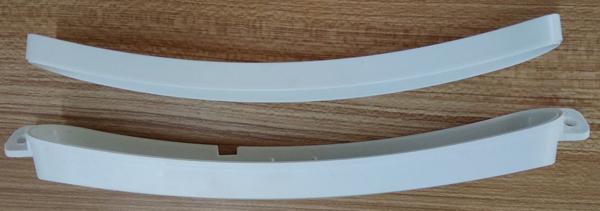35Khz plastic welder with free ultrasonic welding joint design service
Parameter:
| Frequency | 35Khz | 40KHz |
| Generator | 1500W/1000W | 800W/1200W |
| Welding model | Time model energy model, power model, depth model | |
| Distance micro-adjustment | 20-100mm Precision:0.01 mm | |
| The height of the frame in max | 180mm | |
| Input Voltage | 220V/110V | |
Function
1.Frequency auto-chasing: intelligent control system, frequency auto tracking.
2.amplitude adjust Infinitely:amplitude adjust Infinitely , amplitude increase and decrease by5%;
3.intelligent protection: frequency offset protection, output overloading protection, mold damage protection;
4.electrical components: all pneumatic components and main electronic components of the machine are imported from Germany and Japan;
5.fuselage structure: the frame of the machine adopt special steel structure and made by precision cast aluminum CNC machining processing , the frame is more precise and more stable
The Ultrasonic Welding Process.Now that you know the major components of an ultrasonic welder, it’s time to understand how a typical welding cycle works:The first step is to load the parts into the nest by hand or by automation—automation is used in high volume runs. Next the controls of the welder will run in one of four modes:
Weld-by-time. Weld-by-time will run the weld sequence for a set amount of time. For years, this has been a standard way to weld. The disadvantage to this process is that it is an open-loop system (no feedback). With the advent of strict quality requirements in industries such as medical, the weld-by-time method cannot always produce the level of consistency required. If one part varies from the next ever so slightly, there is no feedback to account for differences. This results in variations in weld quality and overall part characteristics. With new sensors and advanced controls becoming more accessible, better weld modes have been developed.
Total Energy. One theory for successful welding is that for a given part, there needs to be a certain amount of energy applied to the parts’ interface to produce a satisfactory weld. Total energy mode works by measuring the power consumed by the welder and adjusting the duration of the weld process to achieve a desired energy input (power x time = energy). This method, while good in theory, is difficult to predict the actual energy applied to the weld due to losses in the machine (ex: energy loss to the fixture).
Collapse (Relative) Distance. Using a linear encoder, the control can measure the distance the horn plunges the top part into the bottom part during a weld. The measurement starts when the horn makes initial contact with the top part (when the actuator lowers) and ends after a preset distance is achieved. This preset distance is a collapse distance—the amount by which the interface between the two parts melt. This method is the preferred method in many situations because you can accurately control the weld depth.
Absolute Distance. When the overall dimensions of the part being welded are critical, the preferred method is “absolute distance”. Using a linear encoder, the welder will continue the weld cycle until a specific overall part dimension is achieved (typically overall height). The total energy, collapse distance, and absolute distance methods all incorporate feedback loops making them closed-loop systems.
After the control mode has been chosen, the actuator depresses the stack. The horn eventually makes contact with the top part and a load is applied. Meanwhile, the power supply provides a current to the converter which outputs a high frequency vibration through the booster and horn. The horn applies this ultrasonic wave to the parts being welded. One of the parts typically have an energy director at the interface. An energy director is a small molded ridge with a height just under 1 millimeter and sides at 60-90 degrees. Due to the vibrations and friction, the energy director will melt and create a molecular bond with the other part’s surface. The weld time usually takes less than a second, after which the weld is quickly cooled due to melting temps staying localized to the parts’ interface. There is no cure time either. Afterwards, the actuator is fully retracted and the parts can be removed by hand or automation.
Advantages:
The benefits of ultrasonic welding are that they produce lower production costs, they create a very effective bond with a high-quality seal that doesn’t require fillers, and they have fasterwelding times that most other traditional welding procedures.
• High strength welds
• No consumables—no fasteners or adhesives
• Fast—no cure or dry time. Welds in less than a second.
• Easily automated
• Clean and precise
• No ventilation needed
• Can vibrate contaminates out of packaging seals
• Provides tamper-proof hermetic seals
• Low power consumption—works in short bursts
• Great for volatile or heat sensitive products
• Uses standard electrical power (both 220v/110V)
• Established technology with many choices in equipment
• Relatively low capital equipment costs
Before welding

After welding
